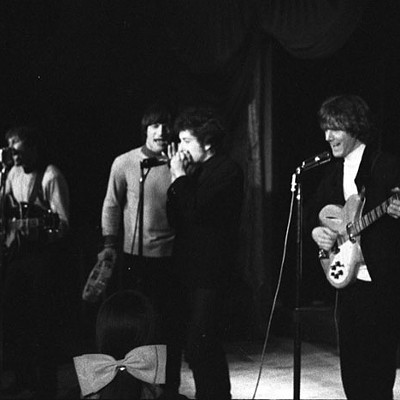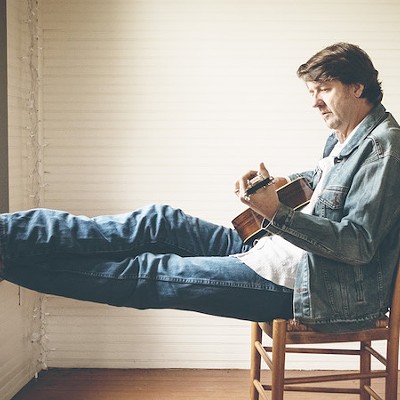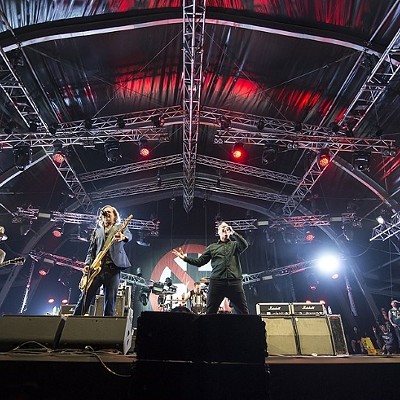In the fall of 1974, Jamie Oldaker was a 22-year-old drummer riding in the backseat of a car with a girl he met at a club. And he wanted to get to know her a little bit, uh, better.
While the couple was tooling down the streets of his native Tulsa, Okla., a song came on the radio with a lazy, syncopated beat and lyrics about cop killing. "I Shot the Sheriff" was the single from Eric Clapton's new record, and it made the electrified Oldaker bolt up.
"I said to her 'Hey, that's me! That's me playing on that record! But she didn't believe me. Nobody did. They said 'If that's you, then what the hell are you doing here!" Oldaker laughs four decades later. "So I still got no girl and no respect. But I did fulfill my dream playing on a hit record."
Well, if that chick is still around, all she has to do is check out the liner notes on the new Eric Clapton box set Give Me Strength: The '74/'75 Recordings (Polydor) to see that Oldaker was telling the truth.
The 5-CD/1-Blu-Ray set offers remixed, remastered and expanded versions of the albums 461 Ocean Boulevard, There's One in Every Crowd, and the live E.C. Was Here. There is also a treasure trove of outtakes, alternate versions, live cuts, and numbers from a session Eric and the boys did with blues great Freddie King, some of which appeared on his record, Burglar.
As many followers of Clapton's life know, when he set foot in Miami's Criteria Studios to record 461 (named for the actual address of the rented beach house the band stayed in), he was at a "crossroads" of his own.
After the huge success of 1971's Layla and Other Assorted Love Songs and the subsequent drug- and ego-fueled collapse of Derek and the Dominos, Clapton spent three years holed up in his mansion with his girlfriend, becoming a heroin-addicted recluse who rarely even picked up a guitar.
Friends like The Who's Pete Townshend would try to get him interested in playing again -- organizing the fabled Rainbow concert partially for that purpose -- and Dominos bassist Carl Radle would play Clapton some of his demos and live tapes, which featured Oldaker.
Still, as Clapton worked to pull himself together, the band that assembled at Criteria (under the direction of producer Tom Dowd) had no idea what to expect.
"I knew who Cream was, but I wasn't sure about who Eric Clapton was so much," Oldaker recalls. "But Carl talked me into being in the group, and I jumped on it, even though I had to quit my job with Leon Russell's band."
What Radle, Oldaker and some of the other musicians -- including guitarist George Terry, keyboardist Dick Sims, and backing vocalist Yvonne Elliman -- found was an Eric Clapton who was not at all interested in revisiting his burning guitar-like "God" status, but a man who was in the middle of a musical 360.
And while there were some blues workouts ("Motherless Children," "Steady Rollin' Man"), the laid-back, calm, lolling vocals and music on 461 tracks like "Please Be With Me," "Let it Grow" and the box set's title song was something of a shock to many.
"That type of music was the way we played it in Tulsa, so it wasn't [new] to me." Oldaker says. "And Eric was not in the greatest shape to do fiery guitar solos, we all know the stories. He's always said he just wanted to be a guitar player in a band and not the front guy,"
He adds that most of the songs on the record, were "created on the spot" in the studio and the result of jamming and collaboration. But the song that came to define the record -- and give Clapton one of his biggest solo hits, reaching No. 1 -- almost never got released.
George Terry had started adding some reggae strummings to his guitar work, and gave Clapton a copy of the then-current Bob Marley album Burnin', which included the song "I Shot the Sheriff." The group decided to tackle a cover.
"You have to understand at this time that Bob Marley wasn't really known, and reggae music had not really made it further than outside of south Miami," Oldaker remembers. "We recorded it, but Eric didn't want to release it because he didn't think we'd done justice to the original."
"But the record company wanted it out, and in those days, they prevailed," he adds. "And obviously, they made the right decision!"
As for the home, which gave the album its name and is featured on the cover, Oldaker has nothing but fond memories.
"We did a lot of drinking, a lot of partying, and we had some equipment set up," he says. "But we'd mostly play in the studio, going in about 6 p.m. and staying until the early morning."
Story continues on the next page.






